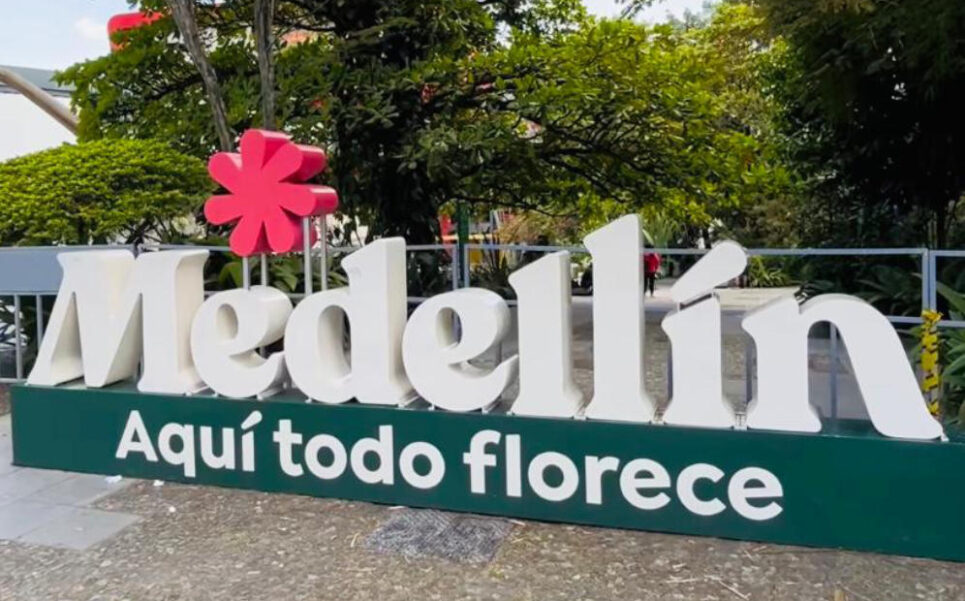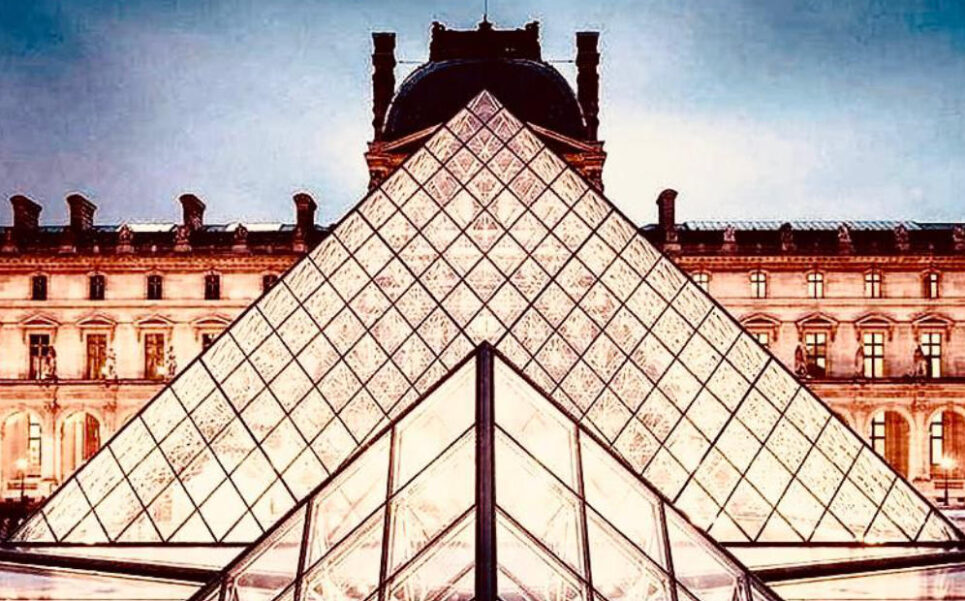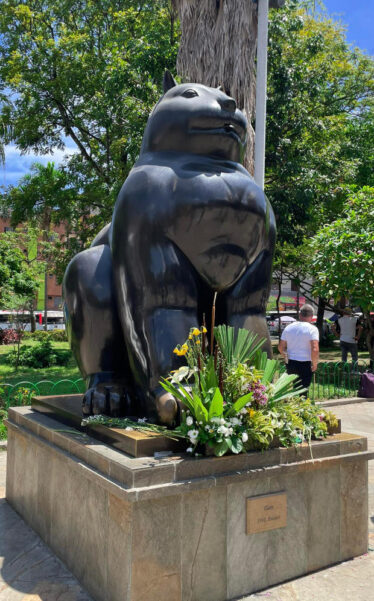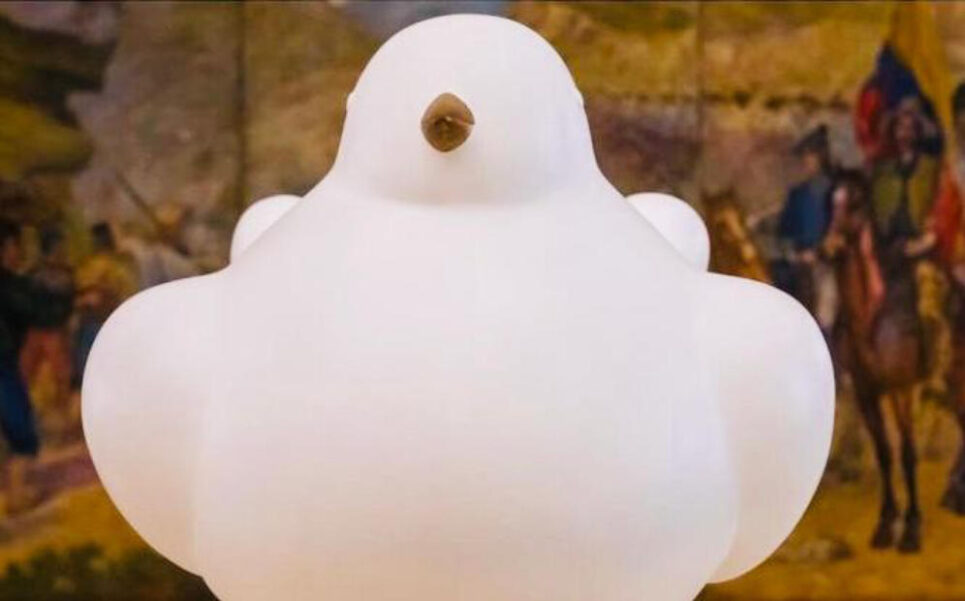It is a sad and heartbreaking moment for the Botero family, for Colombia, and art. The great Fernando Botero has passed away.
But before paying tribute to this art great, I would like to begin by defining what contemporary art is.
Contemporary art
For many, defining contemporary art can be a complicated task. Although its title is simplistic and straightforward, its meaning is not.

Contemporary art is the art of our time. It is related to today’s society.

It is at this point that things get complicated as different individuals’ interpretations of “today” can vary widely. Therefore, the exact starting point of the genre remains a matter of debate. However, many art historians consider the late 1960s or early 1970s (the end of modern art, or modernism) to be an appropriate estimate.
Contemporary art is believed to have begun alongside Pop Art. In the postwar United Kingdom and the United States, artists such as Andy Warhol and Roy Lichtenstein were its pioneers.
It is defined by its interest in portraying mass culture and reimagining commercial products as accessible art.
Although the movement lasted roughly from the 1950s to the early 1970s, it was reborn as Neo-Pop Art in the 1980s thanks to artists such as Jeff Koons.
The man
Fernando Botero Angulo was born in Medellín, on April 19, 1932, and died in Monaco, on September 15, 2023. He was a Colombian painter, sculptor, and figurative draftsman.
His family consisted of his father David Botero, his mother Flora Angulo, his brother four years older, Juan David, and his younger brother, Rodrigo. In 1936 his father died and this tragic event undoubtedly marked him.

His first artistic influences were the Mexican muralists Diego Rivera, David Alfaro Siqueiros, and Antonio González Orozco, as well as colonial baroque altarpieces.
In 1944 he attended the bullfighting school at La Macarena bullring in Medellin, with the banderillero ‘Aranguito’. But, he had a mishap with the bulls, which caused him to leave them.
Botero’s career began when he joined El Colombiano, the main newspaper of his native Medellín, as an illustrator. He was expelled from school for writing an article about Picasso since his drawings were considered obscene, and he had to finish his studies at the Liceo of the University of Antioquia.
After finishing his secondary studies he traveled to the Colombian capital in 1951. The capital allowed him to make his paintings and illustrations known.
It was at this time that he was able to fulfill his first dream and hold a solo exhibition at the Leo Matiz Gallery in Bogotá.

In 1952, Botero received second prize at the National Artists Salon, which allowed him to travel to Europe.
He studied in Madrid, Spain, and finally landed in Florence, Italy. In Florence, he studied at the San Marco Academy.
It was in the 1960s in the United States, at the Milwaukee Art Center where he began to show his characteristic figurative style.

He also lived in Paris, where he spent much of his time at the Louvre Museum.
We know that he was married three times. His first wife was Gloria Zea, between 1955 and 1960, and they had three children. In 1964 he married Cecilia Zambrano, with whom he had his fourth child, Pedrito (1970-1974), and they divorced in 1975. Since 1978 he was married to the painter and jewelry designer of Greek origin Sofia Vari, who died in May of this year.
When he lived in Paris he lived one of his strongest tragedies. He saw the death of Pedro, the son of his second marriage, in an accident with a truck.
As a consequence, he did not paint for several months. He locked himself in his studio to recreate it over and over again.
In Mexico City, he painted a volumetric mandolin with which he opened the doors of the style that characterizes his work.
Works all over the world
His works can be found in dozens of cities around the world.
Botero won numerous international awards, including the Guggenheim International Award in 1957.
In 1969 he had his first major exhibition at the Claude Bernard Gallery in Paris and in 1972 at the Marlborough Gallery in New York. The following year he moved to Paris, where he made his first sculptures, which he showed for the first time at the Art Fair in the French capital.

His distinctions also include the Order of Andrés Bello (1976), the Silver Cross of the Boyacá Order (1977), the French Legion of Honor (2002), the Americas Prize (2002), the Grand Cross of the Order of Isabella the Catholic (2007) and the title of Honorary Ambassador of Colombia to UNESCO.
Another great moment in his career was in 1961 when the MoMa in New York acquired “The twelve-year-old Mona Lisa”.
Botero is, without a doubt, the most important Colombian plastic artist of all time and with the greatest recognition of all time. His enormous sculptures and imposing paintings, in which he reflected his passions, his own life, his tragedies, or those aspects of everyday life that most impacted him, are not only exhibited in the most prestigious museums of the world but are part of private art collections.
His works can be found in central squares, pedestrian walkways, or in the streets of dozens of cities in the same number of nations, to which he donated them or which were acquired to perpetuate them in time.
There are for posterity the 20 sculptures that adorn the Plaza Botero in his native Medellin; those found in Bogota, Madrid, or Barcelona; or those that are imposed on avenues of Buenos Aires, Lisbon, New York, or the Principality of Liechtenstein.
An eternal love with Medellín and Colombia
In April 2022, his native Medellín celebrated his 90th birthday in style as a gesture of gratitude for illuminating with his works a city that was in darkness due to the violence of drug trafficking.

Despite having lived in places like Mexico, New York, Monaco, and Paris, he never lost sight of his country.
He was accompanied by the conviction that art, the more local, the more universal.
He was very aware of the importance of his work and therefore donated a large part of his works to Colombia and pieces of his are distributed among the Botero Museum (Bogotá), Plaza Botero (Medellin), Plaza Santo Domingo (Cartagena) or in the Casa de Nariño, the presidential palace, where the sculpture “La Paloma de la Paz” and the monumental painting “La monja” (The Nun) rest.
The Botero Museum, which houses the most complete collection of his work, was created in 1998 with the donation to the Banco de la República of 123 of his works and 87 by international artists.
One of his most famous sculptures is the Dove of Peace. During the decade in which Colombia was plunged into narcoterrorism, a bomb destroyed it, resulting in 26 dead and a hundred wounded.

The artist asked that it not be rebuilt. It remained as a disfigured monument, and next to it, he made another dove as a tribute to peace. It remains so today. Colombia’s war and peace through its most universal artist.
An undeniable legacy
His legacy is undeniable and his influence in the promotion of Colombian art in international scenarios is incalculable. His sculptures remind us of the greatness of his work and its global impact.
Fernando Botero, with his art exalted form, and the sensuality of volume. His work, like that of a giant, will continue to inspire generations to come through time.
Fernando Botero is synonymous with Colombia and Latin American art.

An artist is much more than the sum of his parts. Botero had an enormous and positive impact on the arts in Colombia, becoming a generous donor and bequeathing his art collection.
He was never indifferent to social or political struggles. In 2007 he presented a series of paintings denouncing the inhumane treatment of Iraqi prisoners by U.S. forces at Abu Ghraib prison near Baghdad. Although surprising, the series was not out of place, as Botero had in the past painted pictures criticizing military dictatorships in Latin America.
Their figures are cartoonishly plump, whimsical, and at the same time so robust that they assume a kind of fleshy monumentality. They are charming.
He did not have a perfect rise; he had and will have many detractors. His commercial success and the superficially unserious nature of his figures led some critics to label his work kitsch.
I am not an art connoisseur, I am not a critic, but that seems unfair to me. Boterism may be playful, but it is as thoughtful and intriguing an ethos as any other.
Untimely end
His works, renowned for their singular style and exaltation of form, transcended borders and conquered the hearts of thousands of people around the world.

For decades, his work has been omnipresent.
The artist’s corpulent characters were portrayed in everyday situations – a corpulent naked woman lying on a bed or a corpulent man riding a horse.
Despite the humorous nature of many of his creations, the artist never shied away from serious subjects.
Botero was the first Colombian artist to be recognized worldwide and is one of a select group of 20th-century artists whose images are immediately recognizable. His work even generated the eponymous “Boterismo”, about enlarged figures like the ones he created.
And therein lies Botero’s enigma: he was an artist largely despised by the contemporary art world who nevertheless enjoyed enormous worldwide visibility and commercial success.


